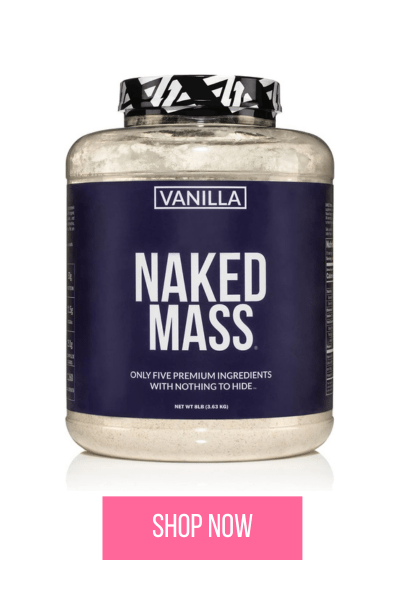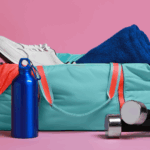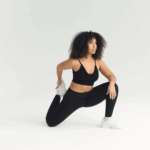Get Stronger Legs with These Lower Body Exercises
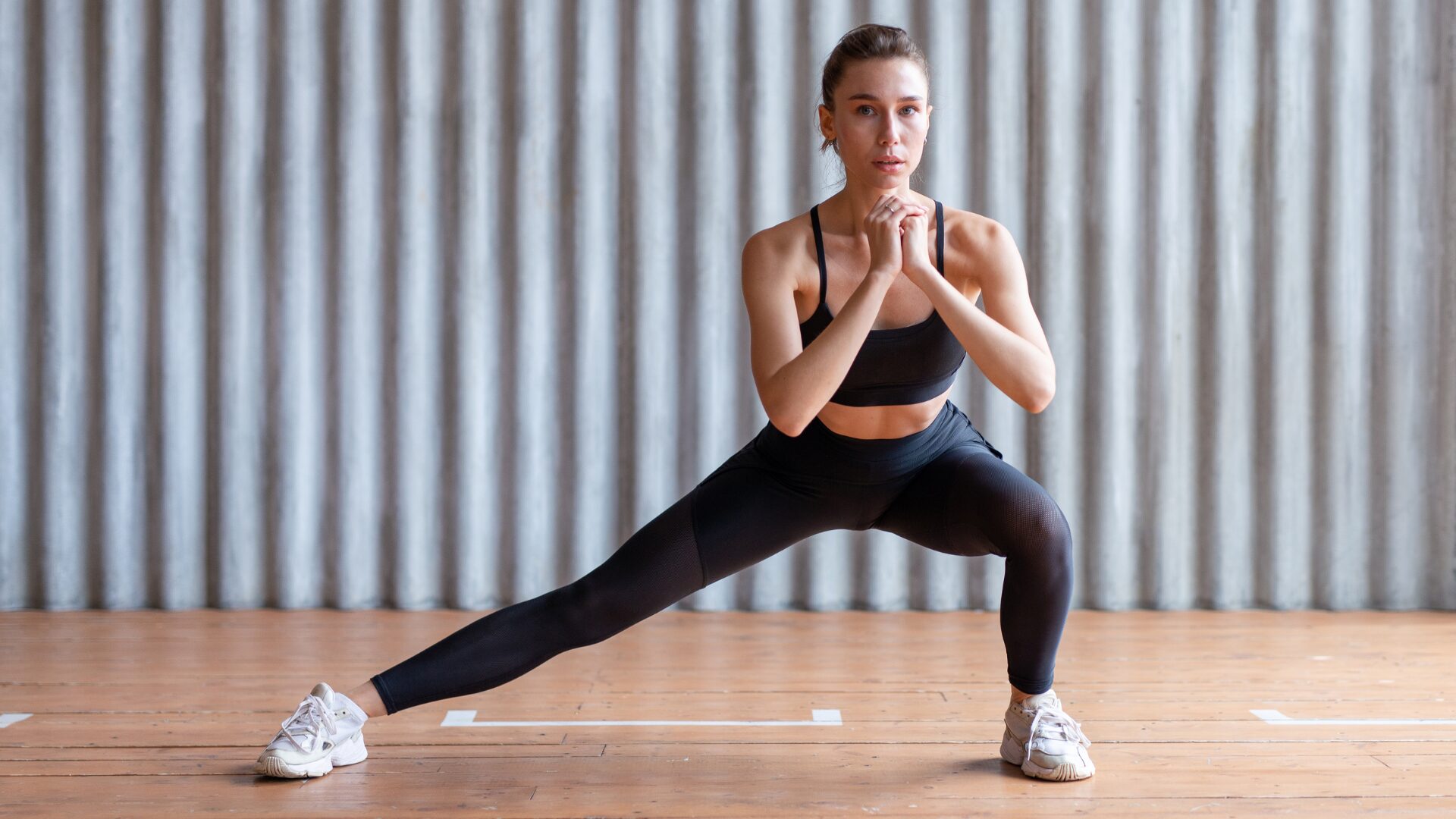
If you’re looking to build strength and definition in your legs, look no further!
In this article, you’ll discover a series of lower body exercises that will help you achieve your goal. Whether you’re a beginner or a seasoned fitness enthusiast, these exercises are designed to target and tone your legs, leaving you with stronger and more sculpted muscles. So grab your workout gear and get ready to transform your lower body with these effective exercises. Let’s get started!
Squat Variations
When it comes to strengthening your lower body, squats are a must. They engage multiple muscles including your quadriceps, hamstrings, and glutes.
One great option is the bodyweight squat. This exercise requires no equipment and can be done anywhere. Simply stand with your feet shoulder-width apart, and lower your body down as if you are sitting back into a chair. Keep your chest up and your knees in line with your toes. Then, push through your heels to return to the starting position. Bodyweight squats are a great way to build strength and stability in your lower body.
If you’re ready to take your squatting to the next level, the barbell squat is an excellent option. This exercise requires a barbell and a squat rack or power cage. Start by standing with your feet slightly wider than shoulder-width apart and position the barbell on your upper back, across your trapezius muscles. Engage your core and lower your body down into a squat, keeping your chest up and your knees in line with your toes. As you lower, aim to get your thighs parallel to the ground or slightly below. Push through your heels to return to the starting position. Barbell squats are a challenging and effective exercise for building lower body strength.
Another variation of the squat is the goblet squat. This exercise requires a dumbbell or kettlebell. Hold the weight close to your chest, with your elbows pointed down. Stand with your feet shoulder-width apart and lower your body down into a squat, keeping your chest up and your knees in line with your toes. Push through your heels to return to the starting position. Goblet squats are a fantastic option for both beginners and advanced lifters. They target your quads, hamstrings, and glutes while also engaging your core.
For a single-leg challenge, try the Bulgarian split squat. This exercise requires a bench or step. Stand in front of the bench and place the top of your foot on the bench behind you. Your standing leg should be a few feet in front of the bench. Lower your body down into a lunge position, keeping your front knee in line with your toes. Push through your front heel to return to the starting position. Bulgarian split squats are a unilateral exercise that helps improve balance and stability while targeting your lower body muscles.
To work your inner thighs and glutes, the sumo squat is a great option. Stand with your feet wider than shoulder-width apart and toes angled outwards. Lower your body down into a squat, making sure your knees track over your toes. Keep your chest up and core engaged. Push through your heels to return to the starting position. Sumo squats are an excellent exercise for building lower body strength and targeting specific muscles.
Lunges
Lunges are another fantastic exercise for developing strong legs. They primarily target your glutes, quadriceps, and hamstrings.
Forward lunges are a classic variation that involves stepping forward with one leg and lowering your body down into a lunge position. Keep your front knee in line with your toes and your chest up. Push through your front heel to return to the starting position. Forward lunges are a great way to improve lower body strength and balance.
If you’re looking to switch it up, try reverse lunges. This variation involves stepping backward with one leg and lowering your body down into a lunge position. Keep your front knee in line with your toes and your chest up. Push through your front heel to return to the starting position. Reverse lunges target similar muscles as the forward lunge, but with a slightly different emphasis.
Walking lunges are a dynamic variation that adds an element of stability and coordination. Begin by standing with your feet together. Take a step forward with one leg and lower your body down into a lunge position. Push off your front heel and bring your back leg forward to step into a lunge with the opposite leg. Continue alternating legs as you move forward. Walking lunges are a great exercise for building lower body strength and endurance while also challenging your balance.
For a unique lunge variation, try curtsy lunges. Stand with your feet hip-width apart and take a big step diagonally behind you, crossing one leg behind the other. Lower your body down into a lunge position, keeping your front knee in line with your toes. Push through your front heel to return to the starting position, then repeat on the other side. Curtsy lunges target your glutes and inner thighs while also engaging your core.
Side lunges are a great way to target your inner and outer thighs. Start by standing with your feet wider than shoulder-width apart. Shift your weight to one side and lower your body down into a squat position on that side. Keep your chest up, core engaged, and knees in line with your toes. Push through your heel to return to the starting position, then repeat on the other side. Side lunges are a fantastic exercise for building lower body strength and improving lateral movement.
Deadlifts
The conventional deadlift is a fundamental variation that involves lifting a barbell from the ground. Start with the barbell on the ground in front of you. Stand with your feet shoulder-width apart and position yourself so the barbell is over the middle of your feet. Bend at the hips and knees, keeping your back flat and grip the barbell with an overhand grip slightly wider than shoulder-width apart. Engage your core and lift the barbell, driving through your heels and extending your hips until you are standing tall. Lower the barbell back down to the ground in a controlled manner. The conventional deadlift is a challenging exercise that builds overall lower body and posterior chain strength.
If you prefer a wider stance, the sumo deadlift is an excellent option. Set up with your feet wider than shoulder-width apart, toes angled outwards. Grip the barbell with an overhand grip inside your knees. Bend at the hips and knees, keeping your back flat, and lift the barbell by driving through your heels and extending your hips. Lower the barbell back down to the ground with control. Sumo deadlifts primarily target your glutes and inner thighs.
To focus on your hamstrings, try the Romanian deadlift. Begin with a barbell in front of your thighs, using an overhand grip slightly wider than shoulder-width apart. Stand with your feet hip-width apart and a slight bend in your knees. Hinge at the hips, keeping your back flat and your chest up, and lower the barbell down towards your shins while maintaining a slight bend in your knees. Keep the barbell close to your body as you lower. Once you feel a stretch in your hamstrings, engage your glutes and extend your hips to return to the starting position. Romanian deadlifts are an excellent exercise for targeting your hamstrings and improving hip mobility.
For a unilateral challenge, try the single leg deadlift. Begin by standing with your feet hip-width apart and your weight shifted onto one leg. Hinge at the hips, extending your free leg behind you for balance, and lower your upper body while keeping a slight bend in your standing knee. Aim to lower until your torso is parallel to the ground or until you feel a stretch in your hamstrings. Engage your glutes and extend your hips to return to the starting position. This exercise targets your hamstrings, glutes, and helps improve balance and stability.
If you’re looking for a dynamic variation, the kettlebell swing is a great option. Start with a kettlebell on the ground in front of you. Stand with your feet shoulder-width apart and hinge at the hips, grabbing the kettlebell with both hands. Swing the kettlebell back between your legs, then forcefully extend your hips and swing the kettlebell up to chest height. Allow the kettlebell to swing back down between your legs, then repeat the movement. Kettlebell swings target your glutes, hamstrings, and lower back while also challenging your cardiovascular fitness.
Step-ups
Step-ups are a practical exercise that mimics everyday movements like climbing stairs or stepping up onto a curb. They target your quadriceps, glutes, and hamstrings.
Dumbbell step-ups are a great variation to start with. Hold a dumbbell in each hand and stand in front of a sturdy bench or step. Place one foot onto the bench or step and push through your heel to lift your body up onto the bench. Step back down, leading with the same leg, and repeat on the other side. The key is to drive through your heel as you step up, engaging your glutes and hamstrings.
If you’re looking for an explosive challenge, try box jumps. Stand facing a plyometric box or sturdy elevated surface. Bend at the hips and knees, swinging your arms back, and then explosively jump onto the box, using your arms to help generate power. Land softly with your knees slightly bent, then step or jump back down and repeat. Box jumps are a high-intensity exercise that targets your lower body muscles and improves explosive power.
Lateral step-ups are a wonderful way to target your outer thighs and glutes. Stand next to a sturdy elevated surface, like a bench or step, and place one foot onto it. Push through your heel to lift your body up onto the surface. Step back down, leading with the same leg, and repeat on the other side. Lateral step-ups engage your glutes, outer thighs, and improve lateral stability.
For a challenging variation that also targets your hamstrings, try elevated reverse lunges. Stand facing away from a bench or step, and place the top of one foot onto it. Lower your body down into a lunge position, keeping your front knee in line with your toes. Push through your front heel to return to the starting position, then repeat on the other side. Elevated reverse lunges engage your glutes, hamstrings, and quadriceps while also challenging your balance.
Calf Raises
Calf raises are an effective way to target your calves and improve ankle stability. They can be done with or without weights.
Standing calf raises can be done with a dumbbell in each hand or with a barbell across your upper back. Stand with your feet shoulder-width apart and lift your heels off the ground as high as possible, then lower back down. Focus on using your calf muscles to lift your body weight. Standing calf raises primarily target your gastrocnemius muscles.
Seated calf raises can be done using a calf raise machine or by sitting on the edge of a bench with a dumbbell placed on your thighs. Place the balls of your feet on the edge of a raised surface, keeping your heels hanging off. Lower your heels down as far as possible, then push up onto your toes, contracting your calf muscles. Seated calf raises target your soleus muscles, which are located deeper in your calves.
For a challenging variation that targets your calves and emphasizes the eccentric phase of the exercise, try donkey calf raises. Start by placing a block or step under your toes, then position yourself so that your upper body is leaning forward with your hands resting on a sturdy surface for support. Lower your heels down as far as possible, then push up onto your toes, lifting your body weight. Donkey calf raises engage your calf muscles in a slightly different way, adding variety to your calf training routine.
Dumbbell calf raises are a great option if you prefer using free weights. Hold a dumbbell in one hand and stand on the edge of a raised surface, keeping your heel hanging off. Lower your heel down as far as possible, then push up onto your toes, contracting your calf muscles. Repeat on the other side. Dumbbell calf raises are an effective exercise for targeting your calves while also challenging your balance and stability.
Glute Bridges
Glute bridges are a fantastic exercise for targeting your glutes and hamstrings. They also engage your core and help improve hip stability.
Hip thrusts are a variation of the glute bridge that allows for greater range of motion and increased loading. Start by lying on your back with your knees bent and feet flat on the ground, hip-width apart. Place a barbell across your hips or use a resistance band just above your knees for added resistance. Drive through your heels and raise your hips up towards the ceiling, squeezing your glutes at the top. Lower your hips back down to the ground and repeat the movement. Hip thrusts are a highly effective exercise for strengthening and shaping your glutes.
Single leg glute bridges are a unilateral variation that helps improve balance and stability while still targeting your glutes and hamstrings. Begin by lying on your back with your knees bent and feet flat on the ground. Extend one leg straight out in front of you. Drive through your heel and raise your hips up towards the ceiling, then lower them back down. Repeat on the other side. Single leg glute bridges are an excellent exercise for building strength and symmetry in your glutes.
To add an extra challenge, banded glute bridges are a great option. Place a resistance band just above your knees, and perform a glute bridge as normal. The resistance band adds extra tension and helps engage your glutes even more. Banded glute bridges are a fantastic exercise for activating your glute muscles and improving hip stability.
For a variation that incorporates a barbell, try barbell glute bridges. Start by lying on your back with your knees bent and feet flat on the ground, hip-width apart. Position a loaded barbell across your hips. Drive through your heels and raise your hips up towards the ceiling, squeezing your glutes at the top. Lower your hips back down to the ground and repeat the movement. Barbell glute bridges are a challenging exercise that helps build strength and definition in your glutes.
Leg Press
The leg press is a machine-based exercise that targets your quadriceps, glutes, and hamstrings. It also offers support for your spine, making it a great option for individuals with lower back concerns.
The horizontal leg press is a classic variation where you sit in a seat with your back against a backrest and your feet on a footplate. Push through your heels to extend your legs and lift the weight, then lower it back down with control. Horizontal leg presses are an effective exercise for building lower body strength and muscle.
If you prefer a different setup, the vertical leg press is another option. With this variation, you lie on your back and position yourself underneath a vertical platform. Your legs are raised and pressed up against the platform to lift the weight. Vertical leg presses target similar muscles as the horizontal variation but with a slightly different emphasis.
To work your legs unilaterally, try the single leg leg press. Sit in the seat with one foot on the footplate. Push through your heel to extend your leg and lift the weight, then lower it back down with control. Single leg leg presses help improve strength imbalances and stability.
If you’re interested in targeting your calf muscles as well, the calf press on the leg press machine is a great option. Sit in the seat with your feet on the footplate, positioned so just your toes are resting on the plate. Push through your toes to raise the weight, then lower it back down with control. Calf presses on the leg press machine effectively target your calf muscles while also engaging your quadriceps and glutes.
Hamstring Curls
Hamstring curls are an excellent exercise for targeting your hamstrings. They can be done using a machine, a Swiss ball, sliders, or even dumbbells.
Machine hamstring curls can be done using a seated or lying leg curl machine. Adjust the machine to fit your body and position yourself with your legs extended and your ankles against the padded lever. Curl your legs towards your glutes, contracting your hamstrings, then lower them back down with control. Machine hamstring curls are a great way to isolate and strengthen your hamstrings.
Swiss ball hamstring curls add an extra challenge by incorporating core stability. Start by lying on your back with your feet on top of a Swiss ball, hips lifted off the ground. Engage your core and roll the ball towards your glutes by bending your knees, then roll it back out to the starting position. Swiss ball hamstring curls engage your hamstrings and core while also improving stability.
Slider hamstring curls require sliders or small towels placed under your feet. Begin in a plank position with your feet on the sliders. Engage your core and slide your feet towards your glutes, bending your knees. Slide your feet back out to the starting position, keeping your body in a straight line. Slider hamstring curls challenge your hamstrings and core while also increasing hip stability.
Dumbbell hamstring curls are a great option if you prefer using free weights. Start by lying on your stomach with a dumbbell held between your feet. Engage your hamstrings and lift the dumbbell towards your glutes, then lower it back down with control. Dumbbell hamstring curls target your hamstrings while also challenging your stability and grip strength.
Wall Sits
Wall sits are a simple yet effective exercise for building lower body strength and endurance. They primarily target your quadriceps but also engage your glutes and hamstrings. To perform a standard wall sit, stand with your back against a wall and slowly lower your body down until your knees are bent at a 90-degree angle. Keep your back flat against the wall and your thighs parallel to the ground. Hold this position for as long as you can, aiming for at least 30 seconds to start. Wall sits are a great isometric exercise that strengthens your lower body muscles.
If you’re looking to add more intensity to your wall sits, try weighted wall sits. Hold a dumbbell, kettlebell, or weight plate on top of your thighs as you perform the exercise. The added weight challenges your muscles even more and helps increase strength and endurance.
For a dynamic variation, medicine ball wall sits are a great option. Hold a medicine ball with both hands in front of your chest as you perform the wall sit. This variation challenges your core and balance while also working your lower body muscles.
To further engage your stability muscles, try a wall sit on a Bosu ball. Place the Bosu ball against the wall with the flat side facing out. Position your back against the wall and slowly lower your body down into a wall sit while balancing on the Bosu ball. This variation adds an element of instability, forcing your muscles to work harder to maintain balance and control.
Plyometric Exercises
Plyometric exercises are explosive movements that help improve power and athleticism. They require a combination of strength and speed and can significantly enhance your lower body performance.
Box jumps are a popular plyometric exercise that targets your quadriceps, glutes, and calves. Stand facing a sturdy plyometric box or elevated surface. Bend at the hips and knees, then explosively jump onto the box, using your arms to help generate power. Land softly with your knees slightly bent, then step or jump back down and repeat. Box jumps are a high-intensity exercise that helps improve lower body power and explosiveness.
Jump squats are another great plyometric exercise that targets your lower body muscles. Begin in a standing position with your feet shoulder-width apart. Lower your body down into a squat, then explosively jump up as high as you can. Land softly with your knees slightly bent, then immediately lower back down into another squat and repeat the movement. Jump squats engage your quadriceps, glutes, and calves while also challenging your cardiovascular fitness.
Lateral bounds are a lateral plyometric exercise that targets your glutes, quadriceps, and calves. Begin by standing with your feet hip-width apart. Shift your weight onto one leg and explosively jump laterally, landing on the opposite leg. Aim to cover as much distance as possible with each jump. Repeat on the other side. Lateral bounds help improve your lateral strength, agility, and power.
Tuck jumps are an advanced plyometric exercise that targets your lower body muscles and requires explosive power. Begin in a standing position with your feet shoulder-width apart. Lower your body down into a squat, then explosively jump up and tuck your knees towards your chest. Extend your legs back out before landing softly with your knees slightly bent. Immediately repeat the movement. Tuck jumps engage your quadriceps, glutes, and calves while also challenging your coordination and balance.
Incorporating these lower body exercises into your workout routine will help you transform your lower body and build strength, power, and stability. Whether you’re a beginner or an advanced lifter, there is a wide range of exercises to suit your needs and goals. Remember to start with proper form, gradually increase intensity and weight, and listen to your body to prevent injury.
Get ready to feel the burn and see amazing results
as you strengthen and shape your lower body!
Share:
Related Posts
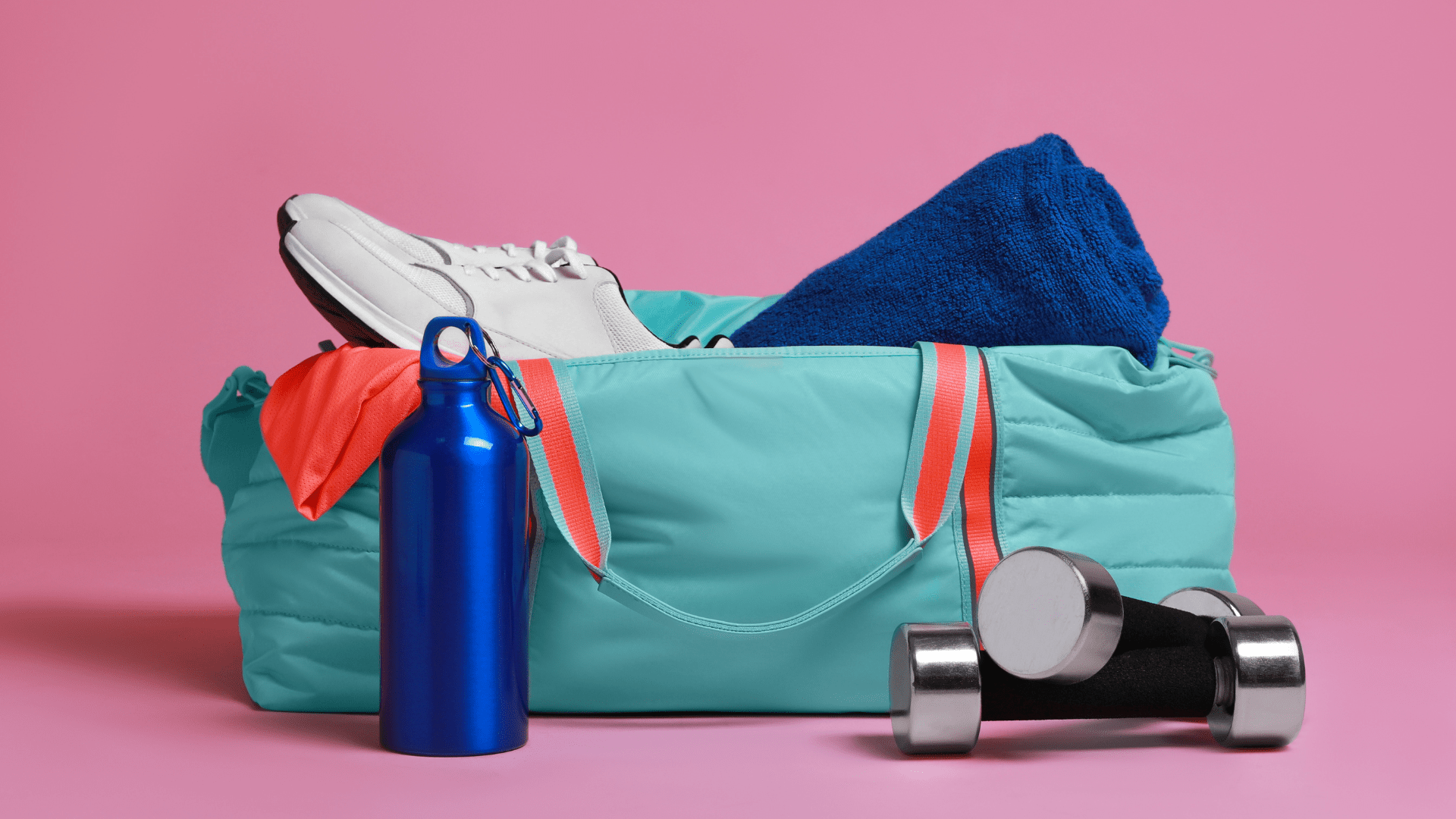
The Best Gym Bags for Women in 2025 (Cute, Stylish & Functional!)
Tired of your old gym bag? Discover the best cute, stylish, and functional gym bags for women. From chic totes to versatile backpacks with shoe compartments, find the perfect bag to take you from workout to weekend in style.

From Bloating to Balance: Fermented Foods for Gut Health: What Women Should Know
Feeling bloated or hormonally imbalanced? Your gut may hold the key. Discover the best fermented foods for women’s health, how they improve digestion, mood, and hormonal balance, and how to easily add them to your diet.
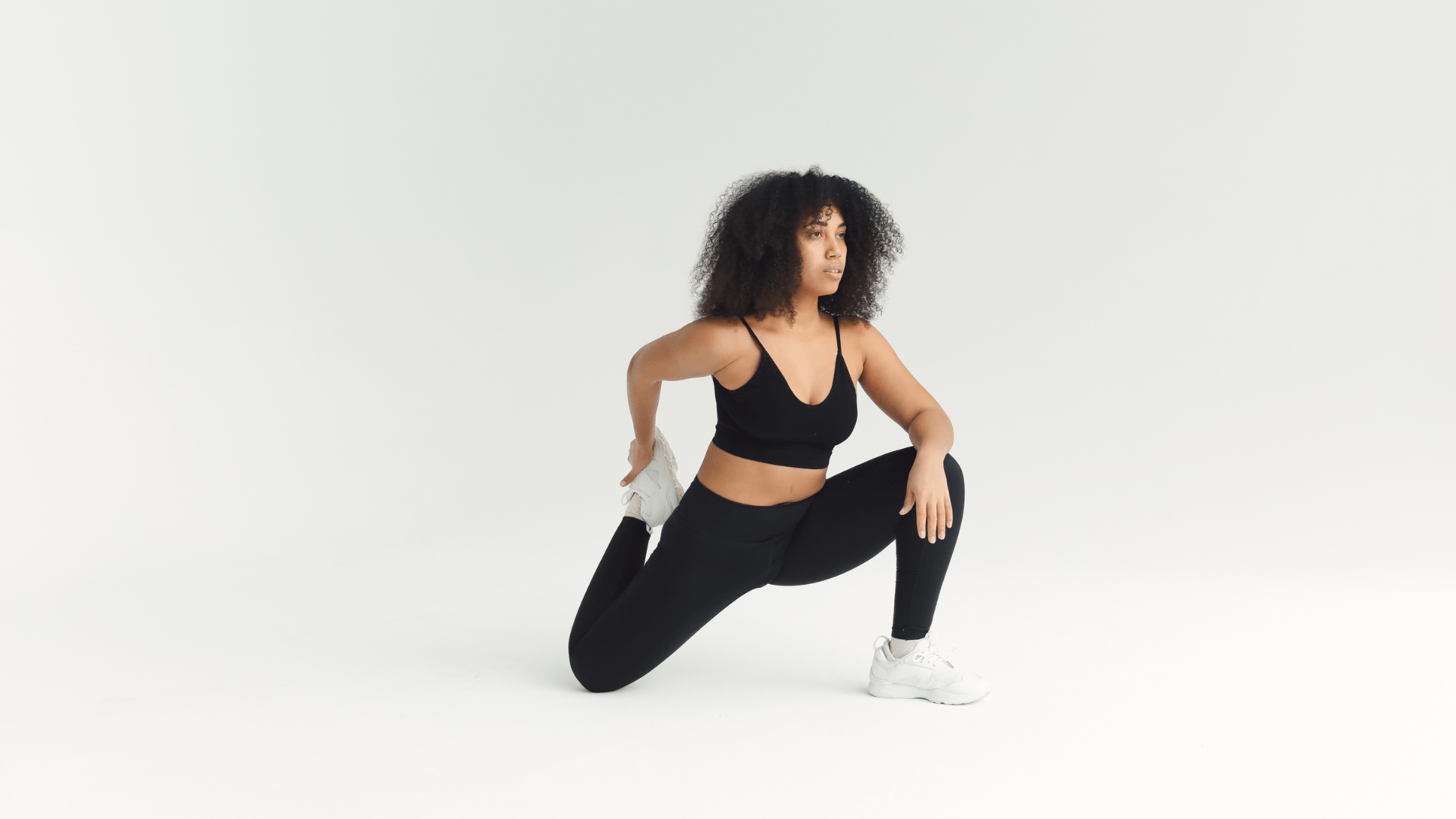
Unleash Your Lower Body Power: The Best Compound Exercises to Grow Your Legs Fast
Want to build strong, sculpted legs quickly? Discover the most effective compound exercises for women that target multiple leg muscles simultaneously for faster growth and a powerful lower body. Say hello to leg day gains!
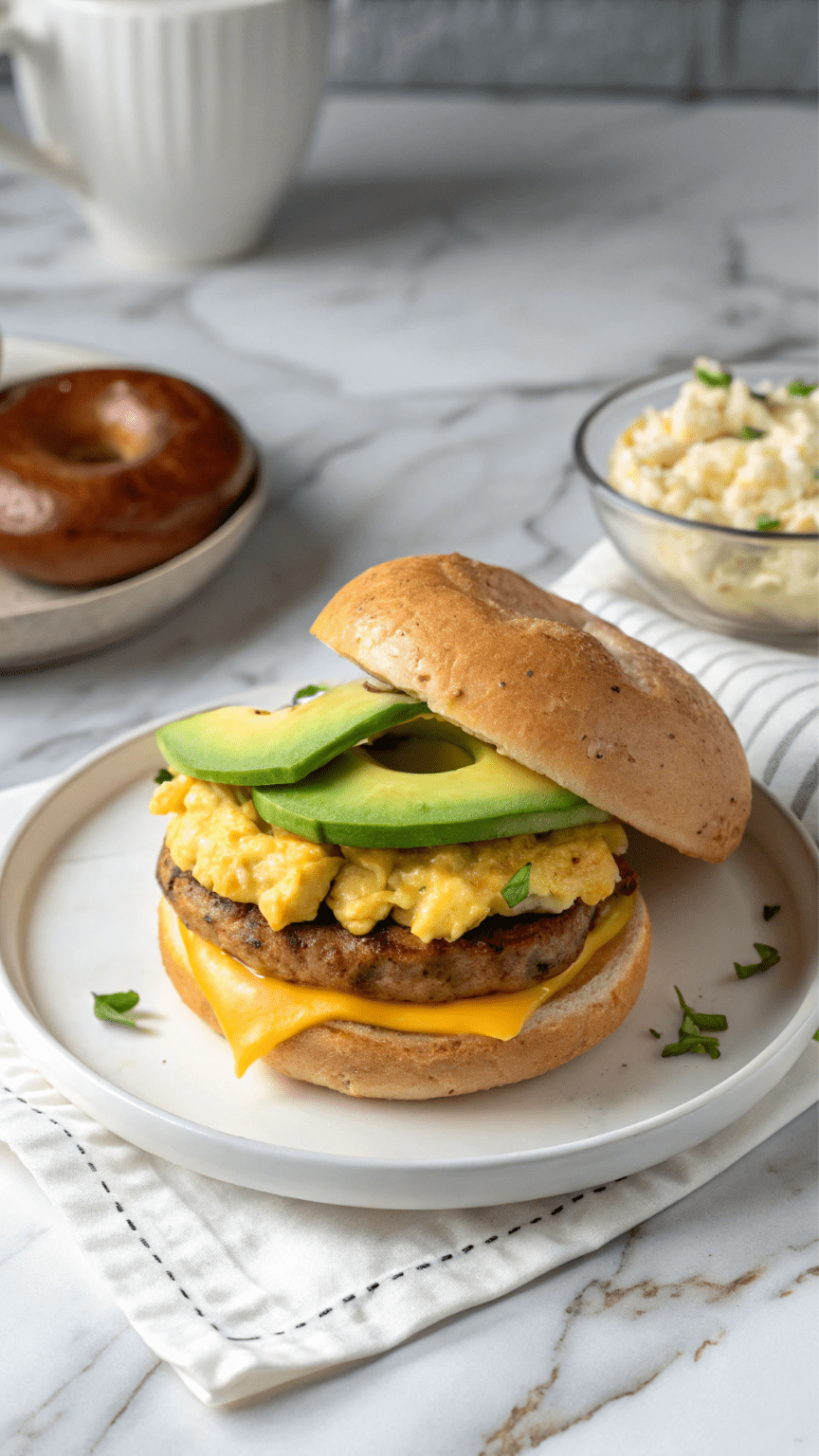
The Ultimate High-Protein Breakfast Bagel
Upgrade your morning with the ultimate high-protein breakfast bagel! This recipe stacks a toasted bagel with a cheesy cottage cheese egg scramble, savory sausage, and creamy avocado for over 40g of protein.

